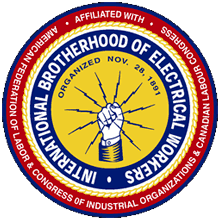June 26, 2012
By Michael Fina Vice President / Institutional Banking, First Trade Union Bank
Over the past few months I’ve been involved in answering several Requests for Proposals (RFPs) from union organizations looking to evaluate competing banking service providers. Interestingly, the proposals we’ve seen of late vary greatly in content and complexity, which started me thinking that it might be a worthwhile exercise to write something about the RFP process, and in doing so, shed some light on what you should look for in choosing a bank.
There is no right or wrong way to write an RFP, but the best ones I’ve seen over the years, the ones that do a good job of getting the best information, have some things in common, which I’ll expand upon below.
Introduction:
Your goal, at the end of this process, is to find a banking provider that best suits your needs. You’re looking for a long-term business relationship with an organization that’s a “good fit,” so it’s important that the responders understand something about your organization.
Use the introduction to provide some background on the organization and why it’s seeking proposals in the first place. Conversely, it’s appropriate to ask questions to the responders about their financial condition, including topics like their debt ratings, Tier 1 ratios and Veribanc rating.
A good introduction should elicit information about the bank’s experience with organizations such as yours. Does it serve other unions and, if so, for how long? Are they supportive of union causes and do they finance non-union construction? Who at the bank oversees the relationship and who supports the relationship manager when he or she is not available? What is the experience level of these staff members, both at the bank and in the industry? Again, all of these are acceptable questions to ask within the RFP.
Scope of Services:
This is, in my opinion, the most important part of any proposal and the one that will require the most thought on your part. This is the section where you want to ascertain, in as much detail as possible, how the bank will serve the needs of your organization. Ask questions about their deposit processing, funds availability, automated clearing house (ACH) and wire transfer policies. Understand its policies and procedures for online transactions. The point is you want to get as much detail about how the bank operates so that there are no surprises once you’ve made a decision.
How does the bank handle exceptions? A couple of little tricks I recommend to people who ask for advice is to take a look back at old statements, going as far back as even twelve months. Are you capturing all the questions to cover your business requirements? Another great method to trigger questions is to search through old emails. What were the topics of conversation between you and your bank’s account team? Chances are a few things have been forgotten over time.
Don’t forget to ask about the bank’s reporting and statement services. Get copies of their existing statements and access to their online banking demo. Also, make sure you understand the bank’s capabilities for document storage and retrieval.
Finally, make sure your questions are framed in a manner that will allow you to have an “apples to apples” comparison between responders. Be specific in how you want to receive answers in regard to capabilities, costs and services.
Bidding Instructions:
While this section might seem a bit obvious, you’d be surprised at how many proposals fail to adequately express the submission guidelines. In preparing an RFP, spell out the timetable and key dates. Will your organization be available for a conference call to address questions? If so, when will that period end? Be explicit in the form and number of responses you want back with an unequivocal deadline. If you plan on conducting follow up face-to-face meetings, spell that out so calendars can be blocked. Ask for references and their contact information.
The key here is that you get to set the guidelines and evaluate how the banks respond. Don’t be afraid to use it as a way to see how they follow instructions.
Proposal Evaluation:
In many regards, this is for your benefit more than the responders. Before you begin the process, make sure the organization and all the stakeholders agree as to what the selection criteria will be. How will you decide from a number of qualified candidates if you internally have conflicting ideas of what’s most important? Articulating your selection criteria will certainly help internally, and will help responders to shed light on those elements most important to you.
As with most anything, the more you put into crafting the proposal, the more you will get out of it. And, as always, if there is anything I can do to help please don’t hesitate to ask.
In Solidarity
Mike Fina
Vice President
First Trade Union Bank is a wholly owned union bank serving labor organizations and its members for more than 25 years with local offices in New Hyde Park and Hauppauge. Mike Fina, Vice President / Institutional Banking for First Trade Union Bank, works in the company’s New Hyde Park office and is responsible for generating new relationships with public and private sector unions throughout New York State. Mr. Fina can be reached at 516-874-9601 or mfina@ftub.com .


